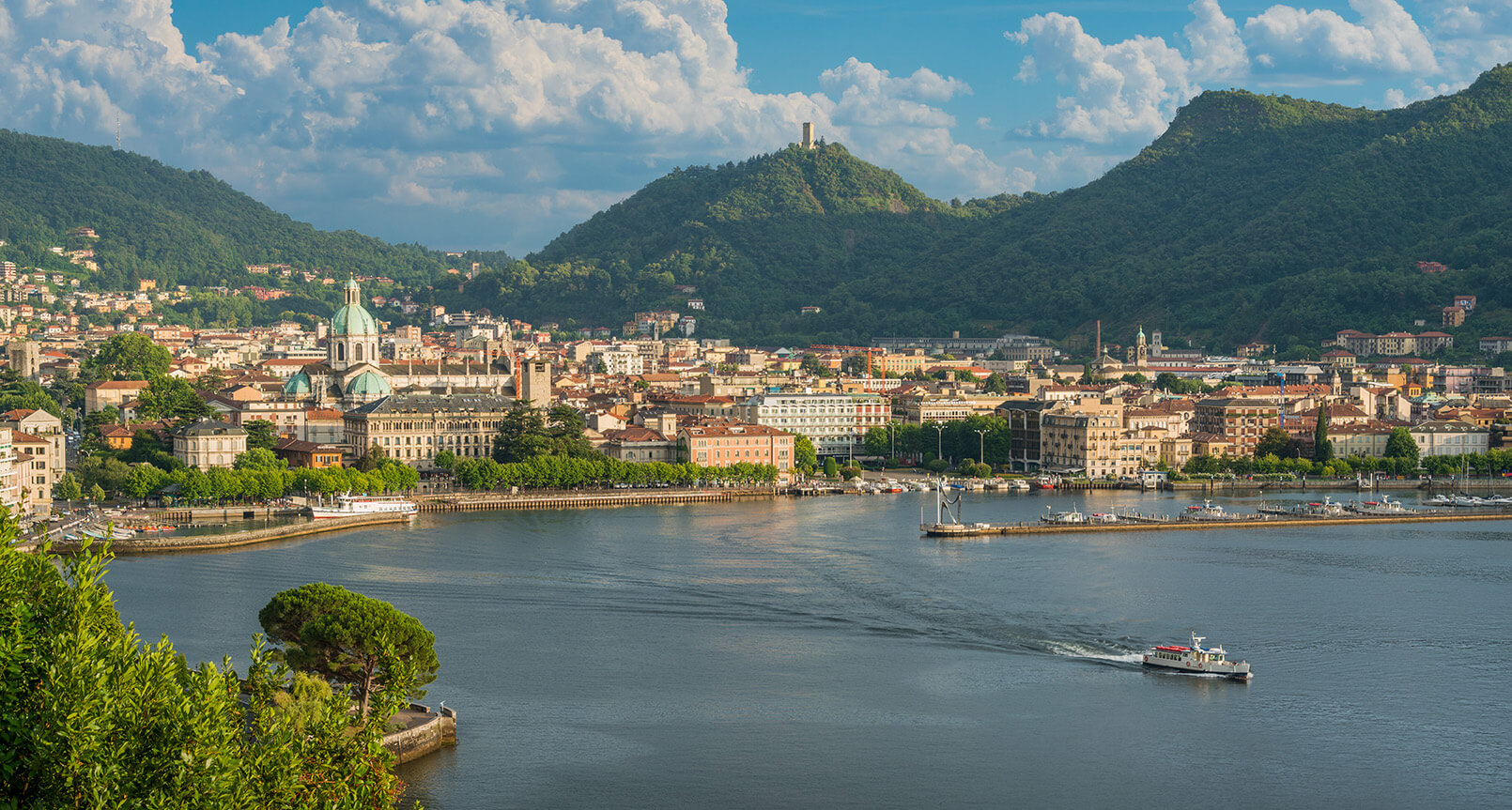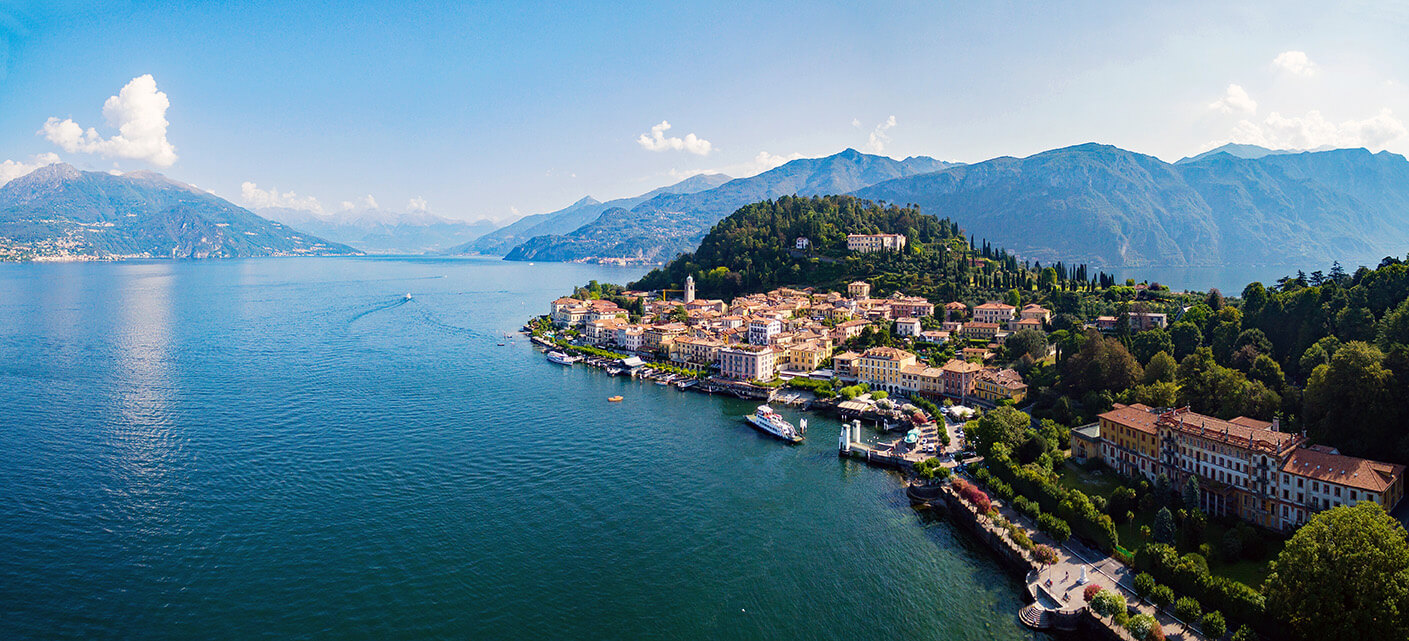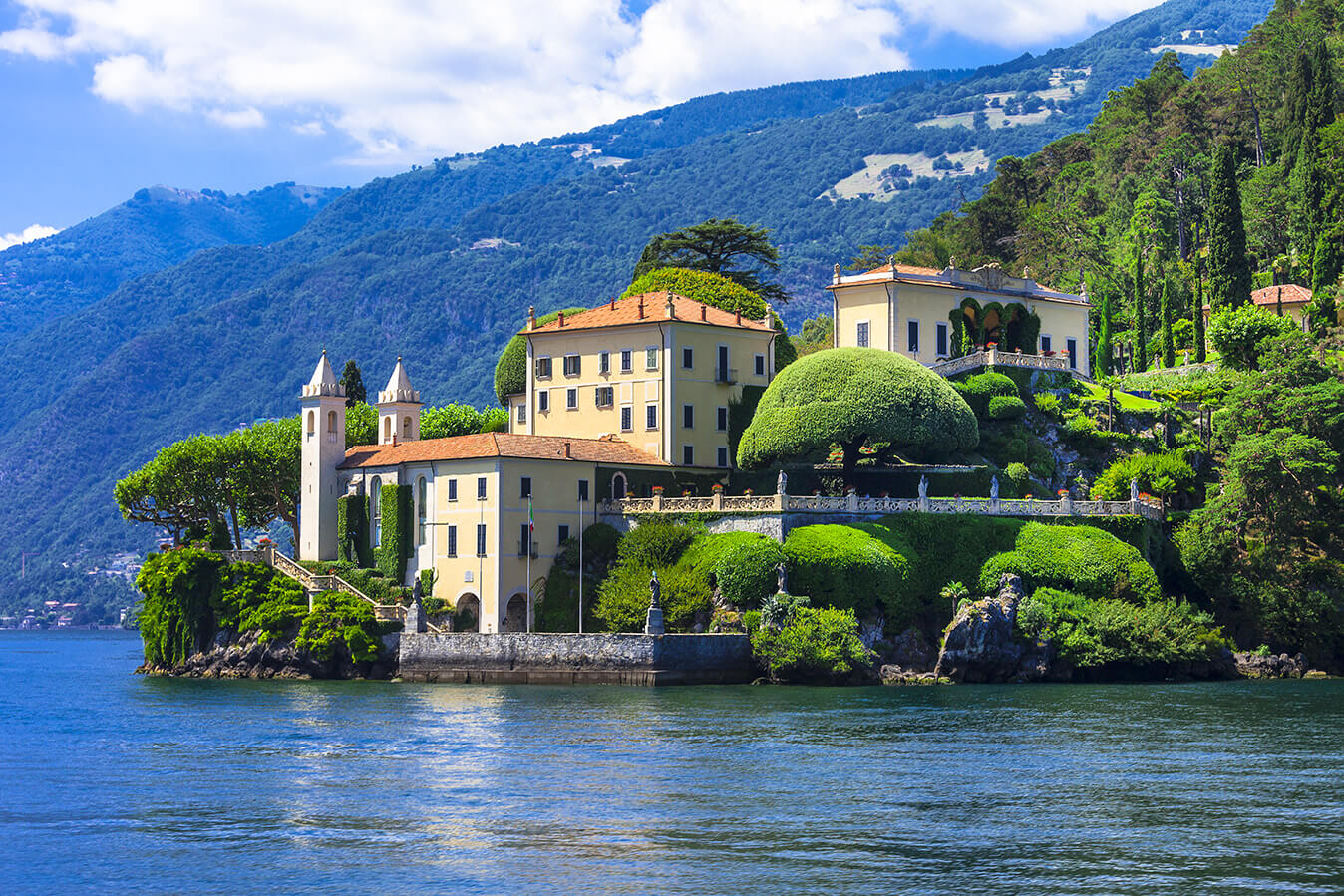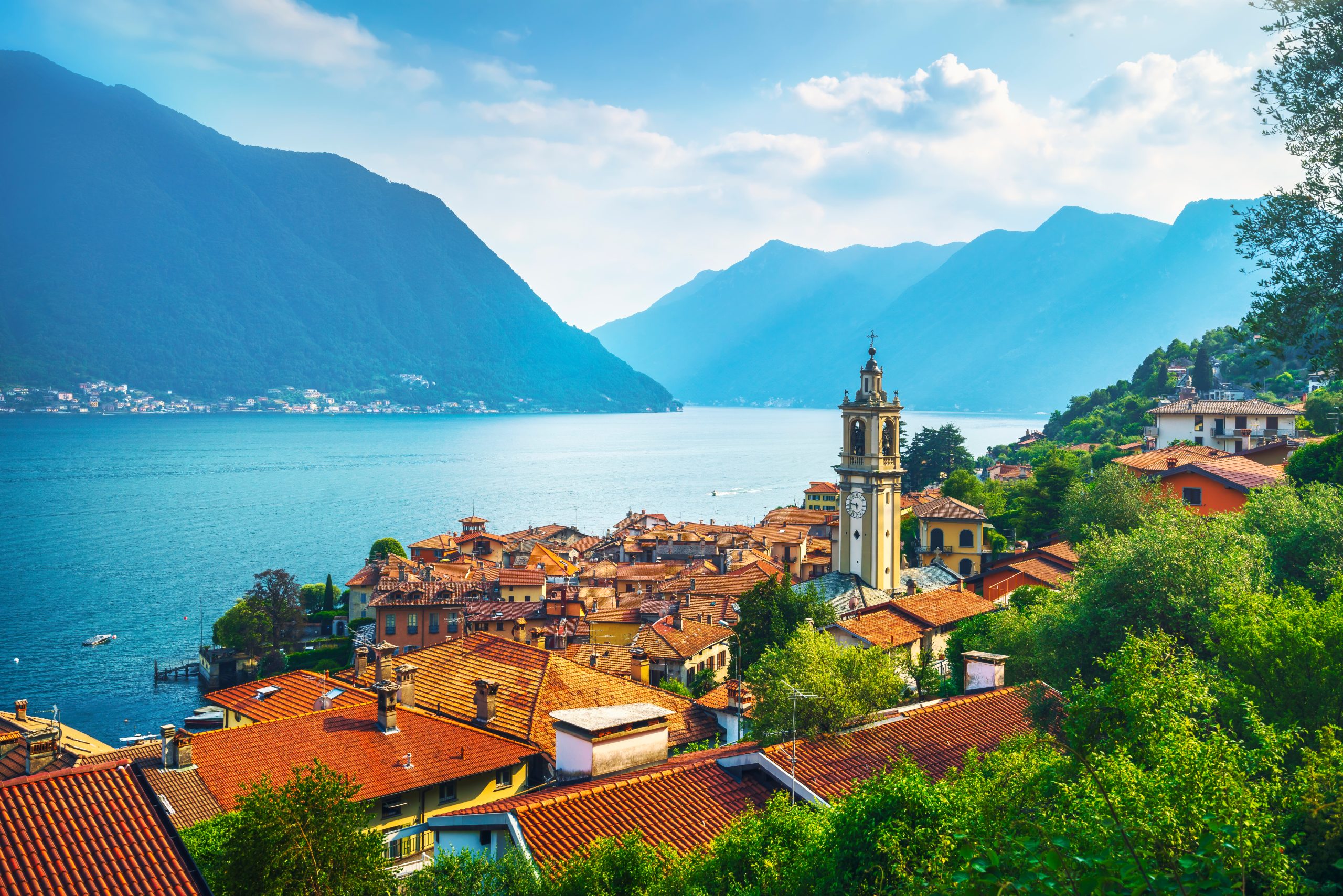




The Lake of Lombardy, also known as Lario, covers an area of 146 square kilometers, with a length of 46 kilometers and a width of 4.3 kilometers. It is situated at an altitude of approximately 200 meters above sea level and is the third-largest lake in Italy after Lake Garda and Lake Maggiore, and the deepest, reaching a depth of 410 meters. Its shape is elongated, and in the lower part, it divides into two branches, resembling an inverted "Y".
The lower branches are called Lake Como (western branch) and Lake Lecco (eastern branch), while the northern branch is called Lake Colico.
The entire area of Lake Como is divided between the provinces of Como and Lecco. The origin of the lake can be traced back to the advance of the glacier from the Valtellina and the Mera River, which was initially united and then split into two parts, forming the two large moraine barriers at the southern ends with the debris. The lake receives the contribution of numerous rivers, of which the main ones are the Mera, descending from the Valchiavenna, and the Adda, descending from the Valtellina and subsequently flowing out of the Lecco branch.
The lake regime is of an Alpine type, with two periods of water level rise in late spring and autumn.
The particularly favorable climate allows for the growth of lush coastal vegetation, and in addition to the typical flora such as azaleas, rhododendrons, and camellias, olive trees, palm trees, and other Mediterranean or even subtropical plants can be found in sheltered areas. The main winds are the Breva, which blows from the south to the north, and the Tivano, which blows in the opposite direction.
The economy of the Lecchese region is mainly based on mechanical, chemical, electrical, and food industries. In the Comasco area, the textile industry, particularly silk processing, stands out, renowned and famous worldwide.
Along the entire coast, tourism holds particular importance, driven by both artistic and, above all, scenic attractions, as well as its proximity to the major Lombard and Swiss ski resorts.
Craftsmanship, fishing, and agriculture also play a significant role in the local economy, contributing to the preservation of popular traditions.